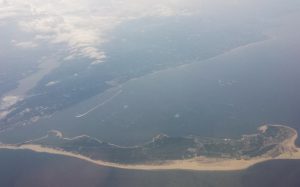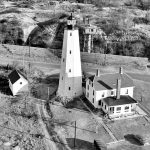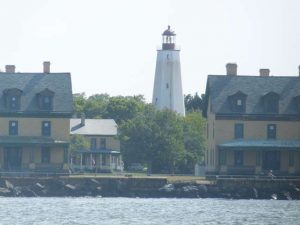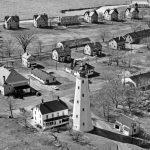
 Most of us have heard the name Sandy Hook because of the school shooting that took place in an elementary school with the same name in Newtown, Connecticut. That tragedy was not the first time the name Sandy Hook had been at the center of attention, however. Most people know that along United States coastal areas, there are many lighthouses. The lighthouses might not be so necessary these days, because of GPS tracking, but before all of the technology that we have today, lighthouses were the only way for a ship to know if they were coming dangerously close to a stretch of land. Such was the case with the Sandy Hook lighthouse in 1776. The problem they were having with the lighthouse, however, is that it was thought that the lighthouse would also help the British ships to invade New York City. It was a very real concern, and posed a grave danger to the Provincial Congress of New York.
Most of us have heard the name Sandy Hook because of the school shooting that took place in an elementary school with the same name in Newtown, Connecticut. That tragedy was not the first time the name Sandy Hook had been at the center of attention, however. Most people know that along United States coastal areas, there are many lighthouses. The lighthouses might not be so necessary these days, because of GPS tracking, but before all of the technology that we have today, lighthouses were the only way for a ship to know if they were coming dangerously close to a stretch of land. Such was the case with the Sandy Hook lighthouse in 1776. The problem they were having with the lighthouse, however, is that it was thought that the lighthouse would also help the British ships to invade New York City. It was a very real concern, and posed a grave danger to the Provincial Congress of New York.
The Sandy Hook lighthouse was located on a piece of land that was disputed territory in those days. The land sits directly across the bay from New York City, making it an important shipping lane, but a dangerous one too. In early 1761, the Provincial Congress of New York set up lotteries to raise money for the construction of a lighthouse. A lighthouse in this area had been under discussion for nearly a century before it was initiated by Colonial Governor Edmund Andread. Forty three New York merchants proposed the lotteries to the Provincial Council, after losing 20,000 sterling pounds to shipwrecks in 1761. The money was collected, and the Sandy Hook lighthouse was built. It first shone its beam on June 11, 1764. It served it’s purpose quite well…in fact maybe too well…at least during the Revolutionary War. Ships weren’t sinking, but in a big way, it left New York City quite vulnerable to attack. So, after just fifteen years of use, the New York Provincial Congress decided that the lighthouse had to be dismantled. Then came the controversy. A committee of the New York Provincial Congress told Major William Malcolm to “use your best discretion to render the light-house entirely useless.” They wanted him to remove the lens and lamps so that the lighthouse could no longer warn ships of possible hazards on the rocky shore. He succeeded. Colonel George Taylor reported to the committee six days later, that Malcolm had given him eight copper lamps, two tackle falls and blocks, three casks, and a part of a cast of oil from the dismantling of the beacon.
Malcolm’s efforts failed, because the lighthouse was quickly put back into service by the merchants in the area, with the installation of lamps and reflectors. The Patriots attempted to knock the light out again on June 1st, by placing cannon on boats and attempting to blow away the British paraphernalia, damaging some of it before 
 they were chased away. Malcolm’s efforts did not prevent the British from invading New York City. The new states of New York and New Jersey fought over ownership of the lighthouse until the federal government assumed control of all US lighthouses in 1787. As of 1996, the Sandy Hook lighthouse, the oldest original lighthouse in the United States, became a historic landmark, and passed into the jurisdiction of the National Park Service. It is still in operation as part of the Gateway National Recreation Area.
they were chased away. Malcolm’s efforts did not prevent the British from invading New York City. The new states of New York and New Jersey fought over ownership of the lighthouse until the federal government assumed control of all US lighthouses in 1787. As of 1996, the Sandy Hook lighthouse, the oldest original lighthouse in the United States, became a historic landmark, and passed into the jurisdiction of the National Park Service. It is still in operation as part of the Gateway National Recreation Area.


One Response to Sandy Hook Controversy